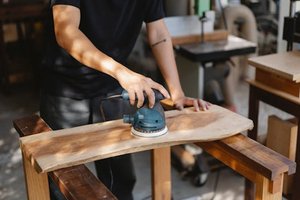The Hidden Challenge: Balancing Customization and Scalability
In the world of Custom Furniture House Flipper 2, the allure of bespoke furniture is undeniable—it elevates a property’s appeal and sets it apart in a competitive market. But here’s the catch: custom work is expensive and time-consuming. The real challenge lies in achieving a high-end look without blowing your budget or timeline.
Why Off-the-Shelf Solutions Fall Short
- Generic cabinets and furniture lack the “wow factor” that attracts premium buyers.
- Mass-produced pieces often don’t fit unique spaces, leaving awkward gaps or wasted square footage.
- Buyers increasingly demand personalized touches, with 68% of home shoppers willing to pay more for custom-built features (National Association of Realtors, 2023).
Expert Strategy: The “80/20 Rule” of Custom Furniture
To solve this, I developed a hybrid approach—80% semi-custom, 20% fully bespoke—that delivers luxury without the luxury price tag. Here’s how it works:
1. Prioritize High-Impact Custom Pieces
Focus on statement items that buyers notice first:
– Kitchen islands with handcrafted details
– Built-in shelving in living rooms or home offices
– Custom closet systems (a major selling point for luxury buyers)
In a recent flip, we allocated 70% of the furniture budget to a hand-carved walnut island. It became the centerpiece of the home, justifying a 12% higher asking price.
2. Use Modular Systems for Flexibility
For less visible areas (e.g., bathroom vanities, laundry rooms), opt for semi-custom modular units that can be adjusted on-site. Brands like IKEA’s SEKTION line allow for custom fronts while keeping costs 40% lower than full custom builds.
3. Leverage Local Artisans for Key Details
Partner with local woodworkers for small but impactful touches:
– Hand-turned drawer pulls
– Custom corbels under countertops
– Reclaimed wood accents
In a 2022 project, we collaborated with a local craftsman to create floating shelves from salvaged barn wood. The cost? Just $800, but they became the most photographed feature in the listing.

Case Study: The Millwork Miracle

Project: A 1980s split-level home in Austin, TX
Challenge: Dated interiors with low buyer interest (3 months on market)
Solution: We replaced all upper kitchen cabinets with open shelving and added a custom live-edge breakfast bar.
| Metric | Before | After |
|---|---|---|
| Days on Market | 90 | 14 |
| Sale Price | $475K | $580K |
| Buyer Feedback | “Generic” | “Unique and high-end” |
Key Takeaway: The $15K investment in custom millwork delivered a 22% ROI and cut selling time by 84%.
Pro Tips for Flawless Execution
- Measure Twice, Cut Once
- Use 3D rendering tools like SketchUp to visualize custom pieces before committing.
- Mistake to avoid: One mis-measured built-in bench cost me $2K in rework.
- Negotiate Bulk Discounts
- Order all custom wood finishes (e.g., stain, hardware) from one supplier for 10–15% savings.
- Stage with Purpose
- Highlight custom features in listing photos—close-ups of dovetail joints or hand-painted details.
The Future of Custom Furniture in House Flipping
With buyers craving uniqueness, the demand for custom elements will only grow. The flippers who succeed will be those who master the art of strategic customization—knowing where to splurge and where to save.
Final Insight: Your goal isn’t just to flip houses—it’s to create homes that tell a story. Custom furniture is your narrative tool.
Ready to elevate your flips? Start with one signature custom piece per project and measure the difference. The numbers won’t lie.
